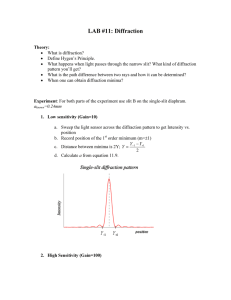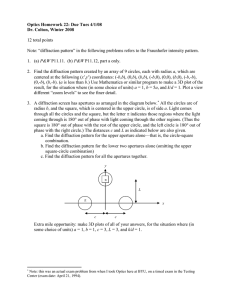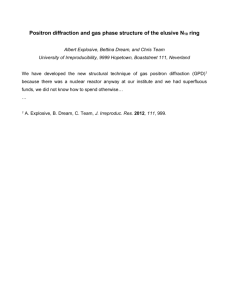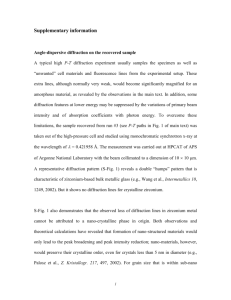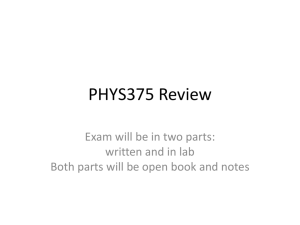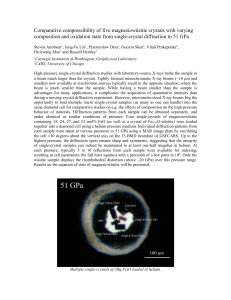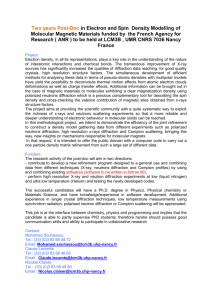Structure transitions induced by electronic state change under high
advertisement
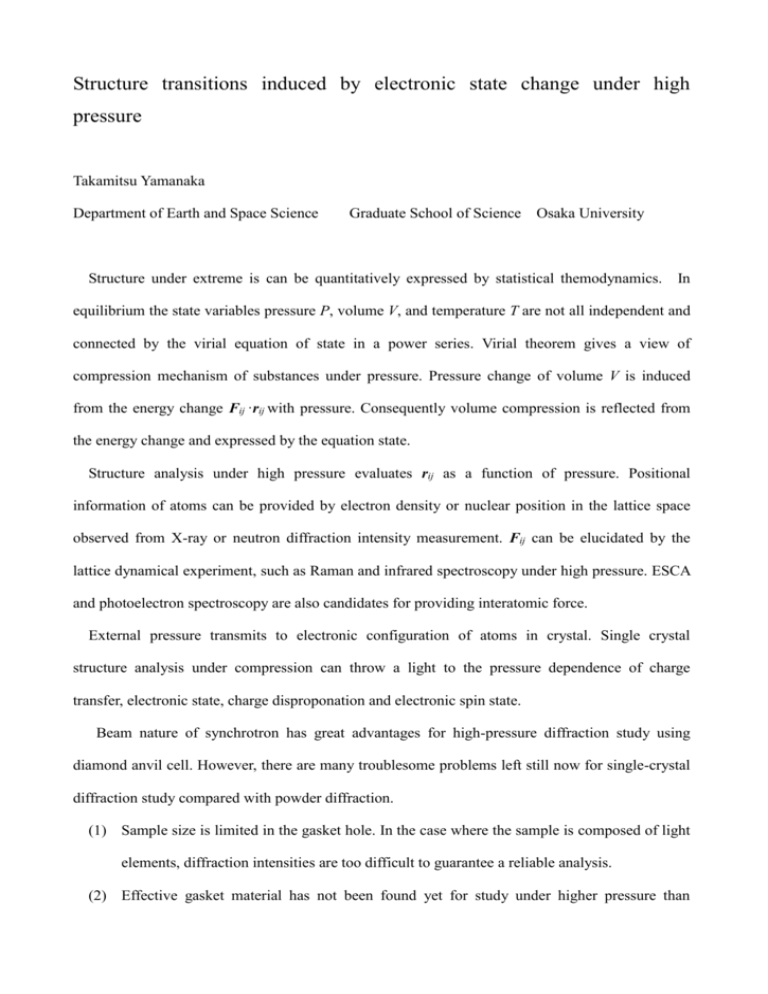
Structure transitions induced by electronic state change under high pressure Takamitsu Yamanaka Department of Earth and Space Science Graduate School of Science Osaka University Structure under extreme is can be quantitatively expressed by statistical themodynamics. In equilibrium the state variables pressure P, volume V, and temperature T are not all independent and connected by the virial equation of state in a power series. Virial theorem gives a view of compression mechanism of substances under pressure. Pressure change of volume V is induced from the energy change Fij ·rij with pressure. Consequently volume compression is reflected from the energy change and expressed by the equation state. Structure analysis under high pressure evaluates rij as a function of pressure. Positional information of atoms can be provided by electron density or nuclear position in the lattice space observed from X-ray or neutron diffraction intensity measurement. Fij can be elucidated by the lattice dynamical experiment, such as Raman and infrared spectroscopy under high pressure. ESCA and photoelectron spectroscopy are also candidates for providing interatomic force. External pressure transmits to electronic configuration of atoms in crystal. Single crystal structure analysis under compression can throw a light to the pressure dependence of charge transfer, electronic state, charge disproponation and electronic spin state. Beam nature of synchrotron has great advantages for high-pressure diffraction study using diamond anvil cell. However, there are many troublesome problems left still now for single-crystal diffraction study compared with powder diffraction. (1) Sample size is limited in the gasket hole. In the case where the sample is composed of light elements, diffraction intensities are too difficult to guarantee a reliable analysis. (2) Effective gasket material has not been found yet for study under higher pressure than 30GPa. (3) Small reciprocal space can not evaluate the anisotropic temperature factors some other parameters. (4) Twinning operation encountered at transition with lowering symmetry has to be conquered. (5) Precise absorption correction to diffraction intensities is necessary for data reduction.
